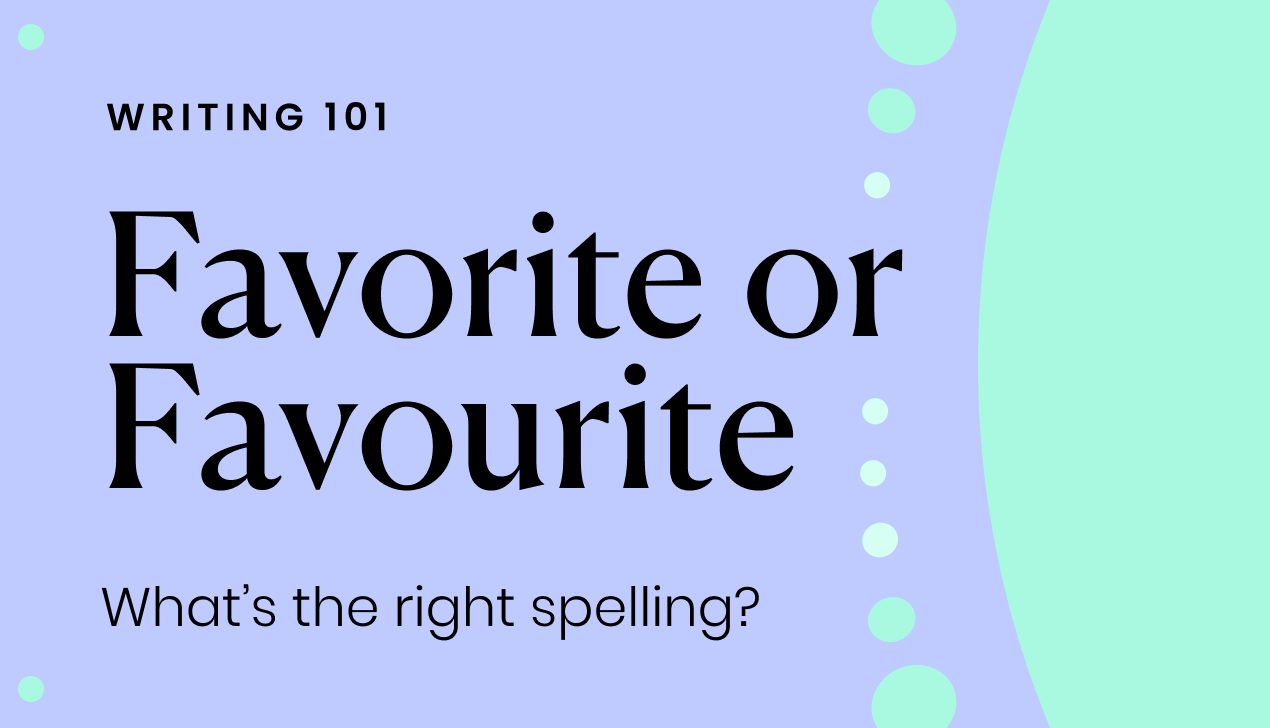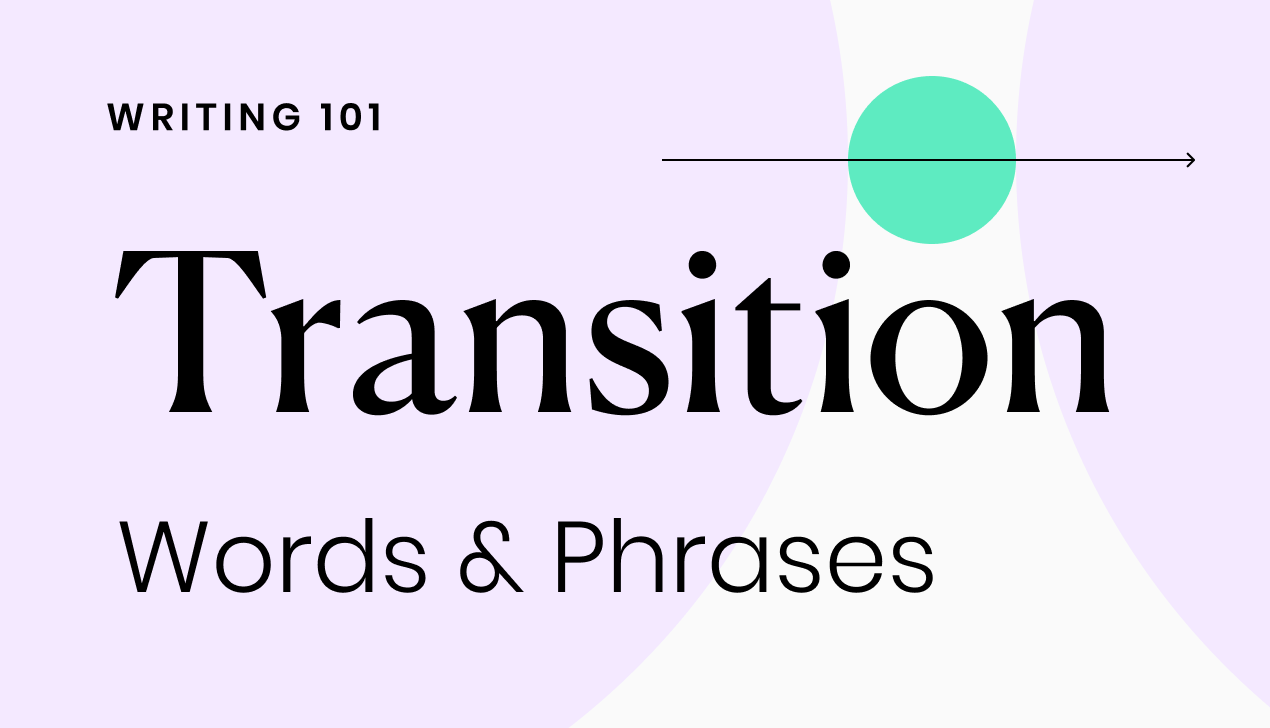Words at work
– 6 min read
Hyphens vs. dashes: know the difference
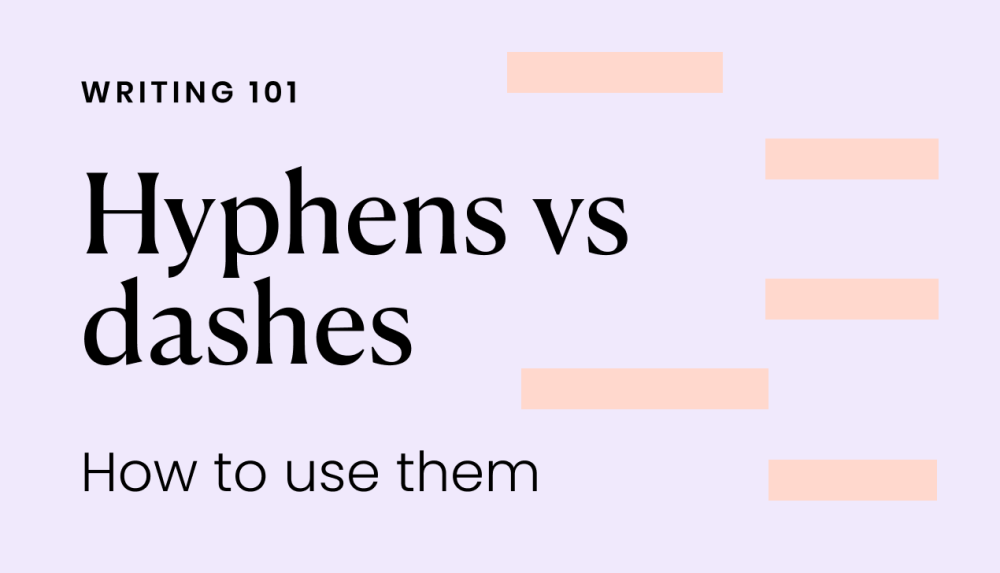
Hyphens and dashes — they look a lot alike. However, their subtle differences can completely change the meaning of a sentence.
For instance, do you know which one was used in the first sentence of this article? It’s an em dash.
In this guide, we’ll cover everything you need to know about hyphens and dashes, including examples of each.
What’s the difference between dashes and hyphens?
Hyphens and dashes may look similar, but they serve different purposes. And you’ll need to know how to tell them apart.
Here’s what the two punctuation marks boil down to:
Dashes: A dash is used to separate words or groups of words. They essentially stand for a pause or a range. There are two types of dashes: the em dash and the en dash. We’ll go into detail about these two later in this guide.
Hyphens: A hyphen is a punctuation mark that’s most commonly used to join compound nouns or a compound noun and a gerund into a single word — for example, dog-friendly restaurants or speedy check-ins. A hyphen is its own thing and shouldn’t be interchanged with other dashes.
Which is longer — a hyphen or a dash?
A dash is longer than a hyphen. This is true for both em dashes and en dashes. If you see a long, straight line breaking up words in a sentence, then it’s likely a dash and not a hyphen.
What does a hyphen look like?
A hyphen is a straight line of punctuation that looks just like this: (-)
Here’s what a hyphen looks like with actual words: one-fourth
And used in a sentence: Use the one-fourth cup to measure the flour.
What does a dash look like?
As mentioned above, a dash is a bit longer than a hyphen. But em dashes and en dashes look a bit different.
Here’s what an em dash looks like: (—)
An em dash used in action looks like this: colors — red.
And here’s an em dash as part of a sentence: His room is painted two colors — red and white.
An en dash is a bit shorter and looks a little different in use.
Here’s what an en dash looks like: (–)
Included with words or numbers, an en dash looks like: 2008–2012
And as part of a sentence, here’s what an en dash looks like: She was enrolled in the 2008–2012 class.
Pro tip: Want to tell the em dash and en dash apart by sight? An em dash is about the same width as the letter M, and the en dash is just about the same width as the letter N.
When to use hyphens
There are multiple scenarios in English grammar where hyphens are necessary. Here are the different times you’ll need to use a hyphen and examples of each.
Hyphens with compound modifiers
Connecting two words with a hyphen can be done with compound modifiers. Essentially, two words are brought together to act as a single adjective. This only works if the noun comes after the words acting as an adjective.
Be aware of where the noun is placed so you know if the words need a hyphen. Here’s an example:
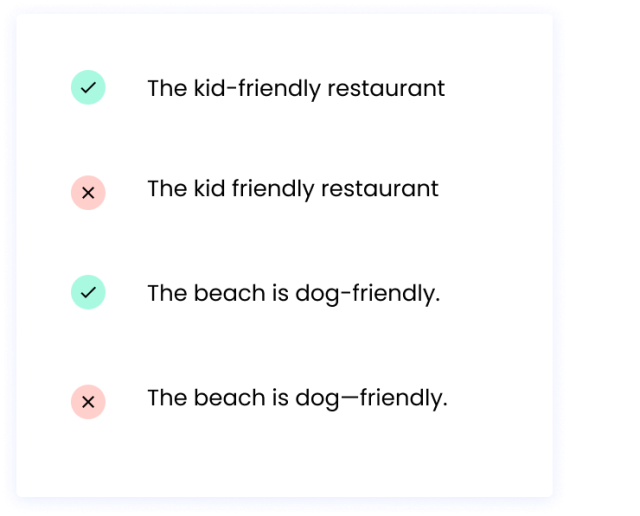
Another time to skip the hyphen is if the modifier consists of an adjective and an adverb. Here’s an example:
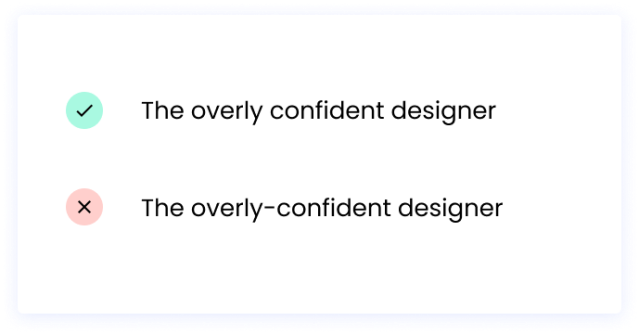
Hyphens with compound words
Hyphenated compound words are common compound words with hyphens between them. Some have become closed compounds. Here are some examples:
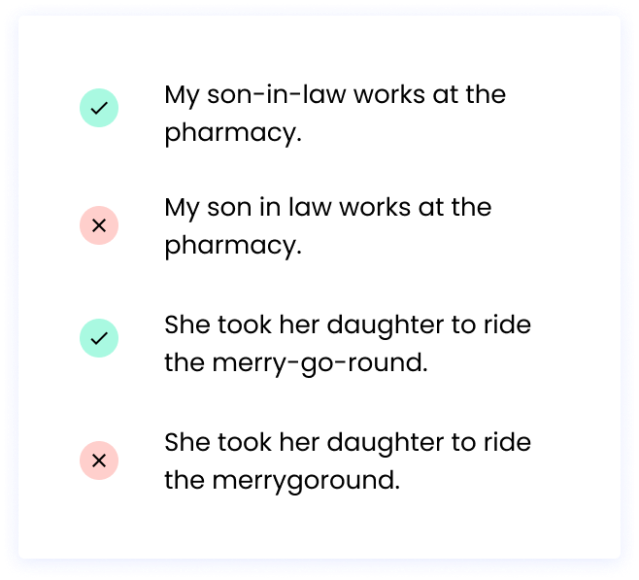
Hyphens with numbers
Certain numbers, specifically those between 21 and 99, should be hyphenated when spelled out, such as at the beginning of a sentence.
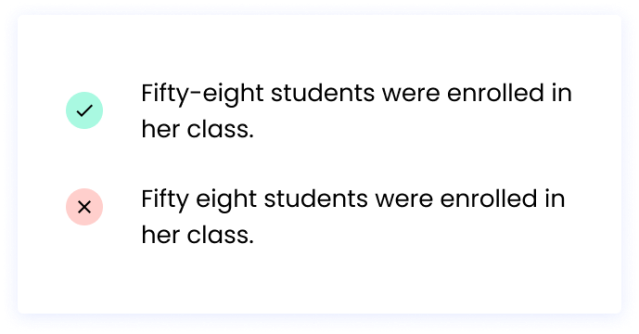
Whether a number is spelled out or written as digits, you need a hyphen if it’s part of a compound adjective and followed by a noun. Here are a few examples:
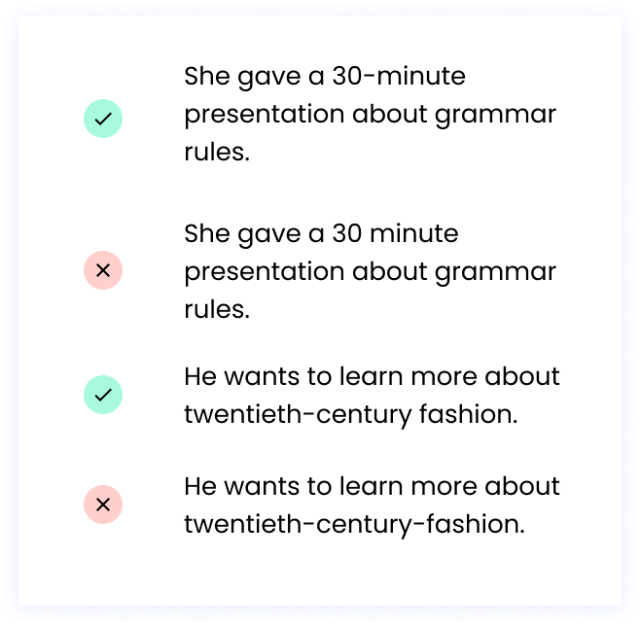
Hyphens with prefixes
When you attach the prefixes all, self, or ex to the beginning of a word, you’ll need to use a hyphen.
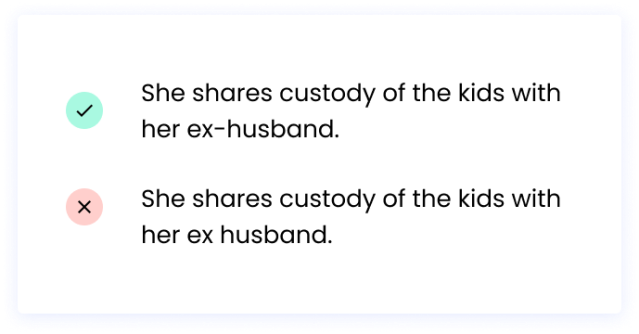
When to use an em dash vs. an en dash
You can’t talk about dashes without mentioning em dashes and en dashes. Em dashes and en dashes have different uses, so we’ll be sharing different examples of each.
Let’s go with the em dash first.
Em dash in place of parentheses
You can add emphasis to parts of your writing by using an em dash in place of parentheses in a sentence.
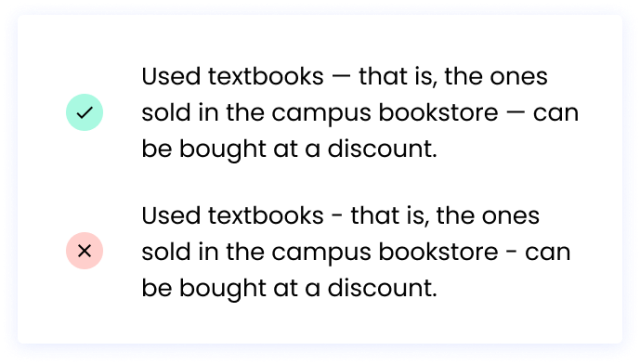
Em dash with lists
An em dash can be used to draw attention to a list. This is best when the sentence begins with the list.
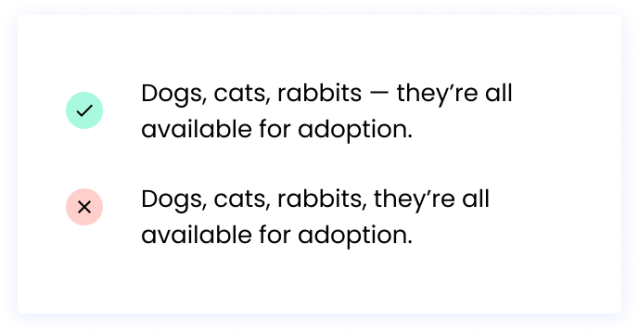
Em dash with changes of thought
Sometimes in a sentence, you’ll need punctuation to indicate a change in direction or thought. This is where the em dash comes into play.
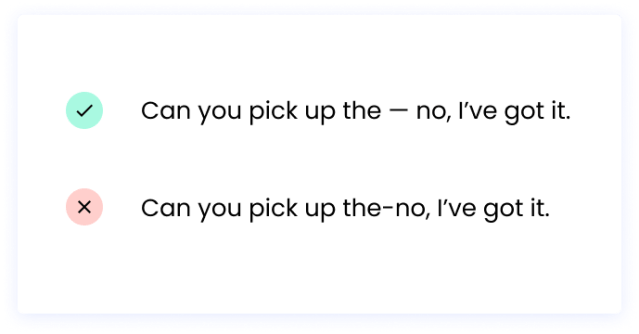
Em dash with omissions
Censored, omitted, or unknown characters can be replaced with an em dash. Here’s how:
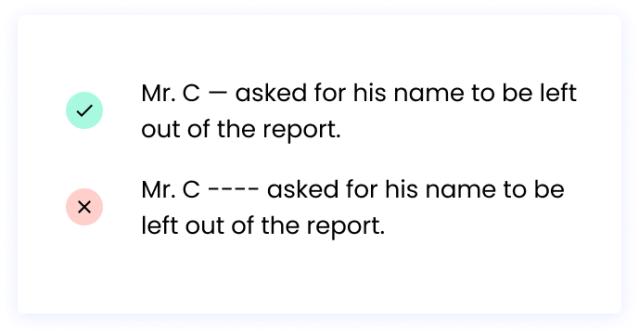
How to type an em dash using a keyboard shortcut
Em dash keyboard shortcut
On a PC, press Ctrl + Alt + Minus.
On a Mac, press Shift + Option + Minus.
Now let’s switch gears and focus on the en dash.
En dash to indicate a connection
An en dash can show a connection between words that already use a hyphen or have a two-word phrase as a modifier. Here’s what an en dash looks like in these scenarios:
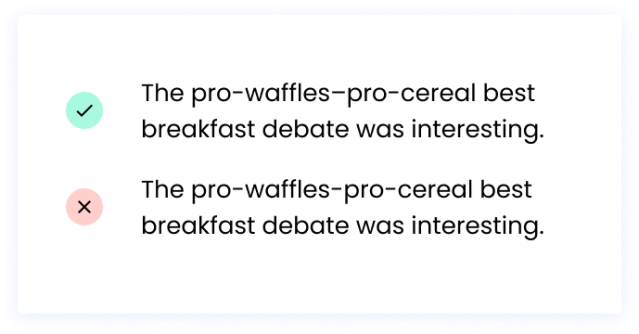
En dash with numbers or time
The en dash is typically used to show a range of numbers or time. Here are a couple of examples.
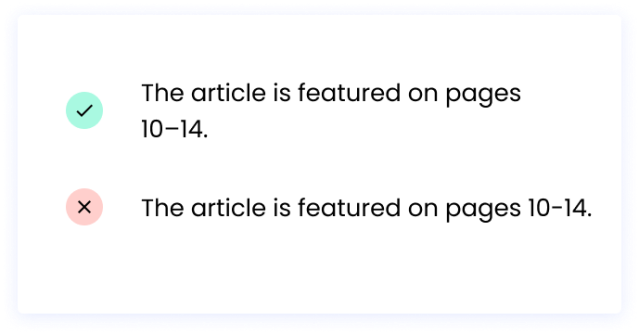
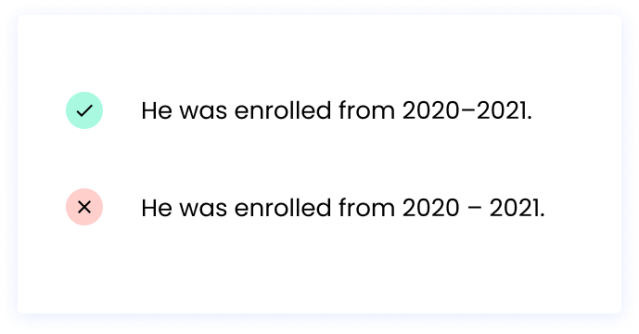
How to type an en dash using a keyboard shortcut
On a PC, press Ctrl + Minus. On a Mac, press Option + Minus.
Dashes and hyphens are easy to mix up. The best way to remember when to use each one is by practicing. Keep writing, and you’ll master hyphens and dashes in no time!
Level up your writing game with Writer. Start a free trial and customize your usage of hyphens and dashes in the Writer style guide.


